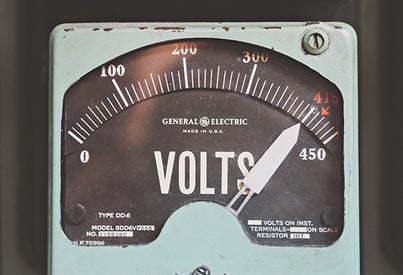Measurement and verification (M&V) is a practice used by energy companies to detail the decrease in energy consumption associated with energy efficient projects. Project planners need a foundation to get the data necessary to track ROI and determine whether they meet their original energy efficiency goals. Green building techniques, optimized operations via automation systems and real time data provide many opportunities for companies to achieve significant energy savings.
COMMON USES OF M&V
Measurement and verification is a useful service that create a baseline measurement to show businesses how they are wasting energy. The baseline measurements provide energy efficiency consultants with a foundation in which they can gauge current functions and energy levels. Measurement and verification provide an actionable flow for energy efficiency consultants to extract building data, analyze the data then evaluate it. This flow of steps enable energy consultants to implement and prioritize energy improvement projects and evaluate the progress.
COMMON TOOLS AND HARDWARE USED BY M&V
Data loggers are commonly used to get the data needed for measurement and verification. Meters, sensors and other hardware deliver this information for the report. Although this is a common tool to collect data, it provides several hurdles in efficient data collection including: data bottlenecks, lack of real time data and visible analytics.
HOW IOT HAS CHANGED M&V
The Internet of Things has created a fundamental shift in the way measurement and verification functions. Rather than working with data that is days, weeks or months old, energy efficient consultants receive real-time updates that reflect current energy usage. With IoT solutions, energy efficient consultants have the ability to see the exact changes that take place after an energy-efficient project is complete and keep on tracking the results on an ongoing basis, allowing them to show the investment is worthwhile and make continuous improvements as necessary. IoT–based M&V provide:
- Speed & access to facility data
- Real time data collection enabling insights to customers in a transparent and timely matter
- Untapped data to help run a building at an optimal operational state
- Alerts to customers for suboptimal energy usage as they happen, saving them money
Due to the increased data accessibility, energy efficiency consultants can use IoT to help with many categories of measurement and verification. Isolating individual components or changes in the building system provides granular data that’s far more detailed than trying to pull data based on the overall energy usage.
IoT devices can integrate with other innovative solutions, such as a building automation system. Energy efficiency consultants no longer need to access multiple systems to pull measurement and verification data for equipment throughout the facility. Instead, they reference a single solution to get a better understanding of the current energy consumption. There is no need to constantly commission and recommission building, saving time and money on projects.
HOW TO IMPROVE CONTINUOUS M&V
IoT transforms organizations’ measurement and verification drastically from its original form. While they may not achieve that type of leap in the future, energy efficiency consultants can take advantage of the system to get on the path for ongoing improvements in measurement and verification. It’s much easier to determine the impact of small changes, whether they’re looking at the data from a building-wide standpoint or isolating that part of the retrofit.
Incremental changes optimize the building’s energy consumption over time, with the help of data accessibility. As IoT sensors gather more information, energy efficiency consultants can discover new opportunities for energy savings. They may be incremental improvements that were previously unfeasible to consider due to the lack of visibility into the potential savings. Now everything is quantifiable.
A lot can change in a year, with fluctuations in energy costs, different operating environments and new technological advances. An IoT-driven continuous measurement and verification allows energy efficiency consultants access to real time data can alert them to energy consumption while a traditional measurement and verification plan would hide this problem for some time. Depending on what is going wrong, this could be a costly proposition for any facility.
Measurement and verification is an essential part of moving toward a smart and green building. IoT sensors improve the traditional measurement and verification process through real time insights that make it possible to continually optimize systems, provide accurate and transparent analytics and extinguish data bottlenecks. Energy efficiency consultants can move from reports that have significant delays after installation to a nearly instant look at how well an energy project is performing.



